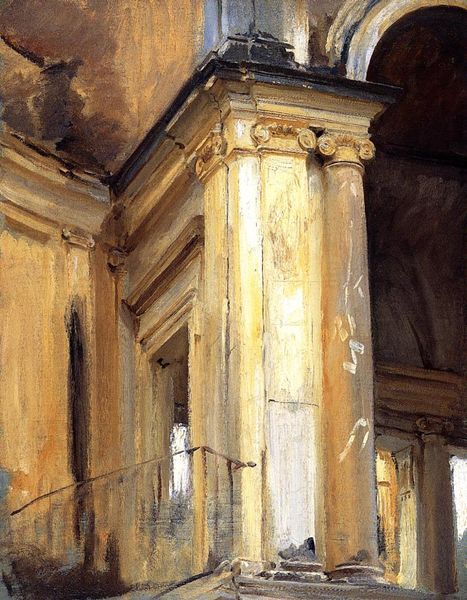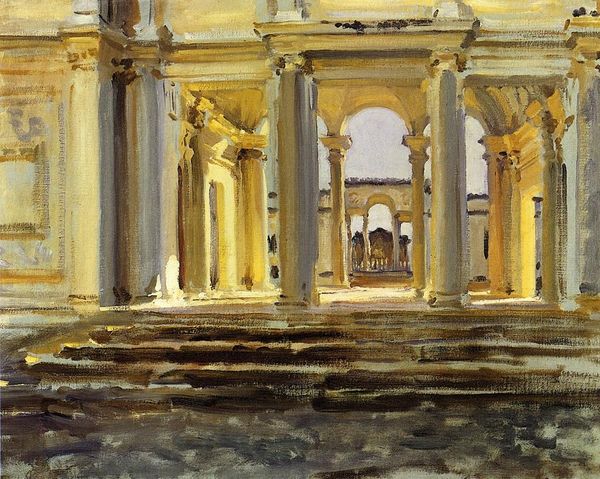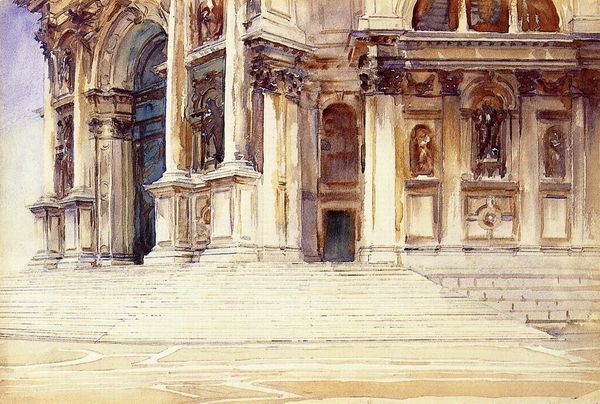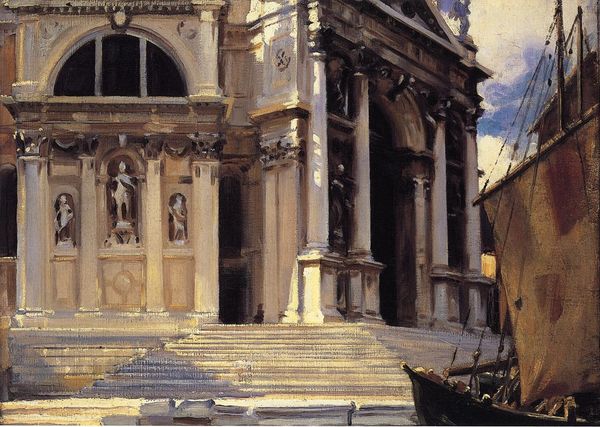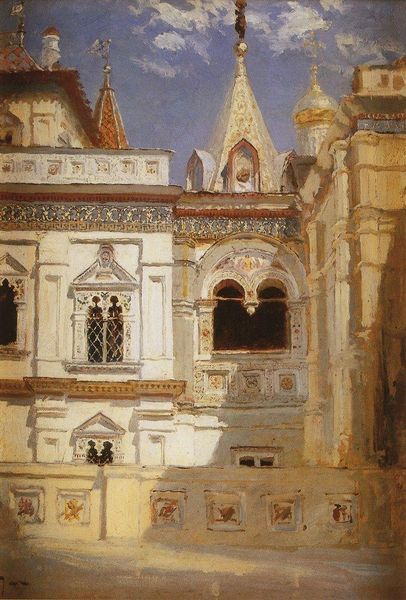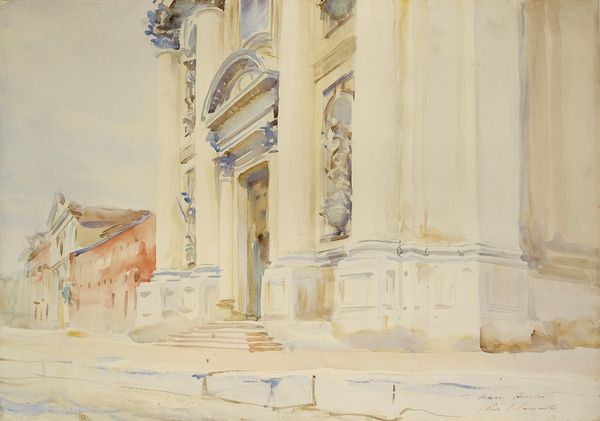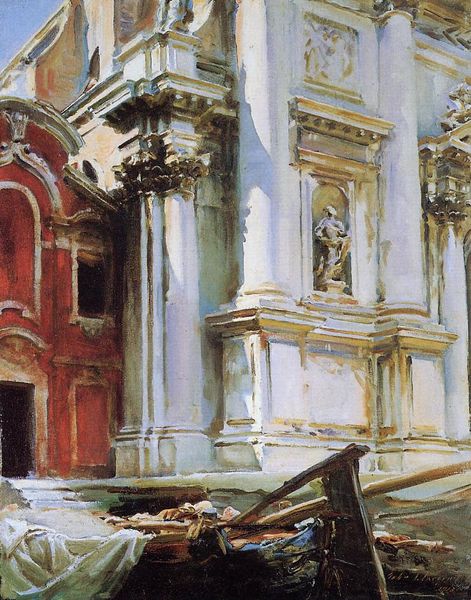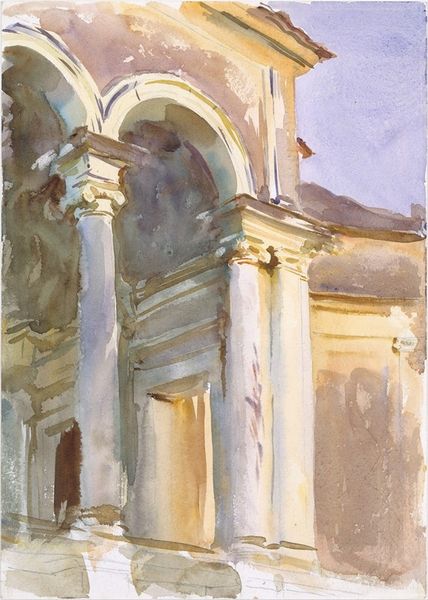
The Steps of the Church of S. S. Domenico-e-Siste in Rome 1906
0:00
0:00
johnsingersargent
Ashmolean Museum, Oxford, UK
#
public art
#
urban landscape
#
street view
#
sculpture
#
urban cityscape
#
possibly oil pastel
#
oil painting
#
acrylic on canvas
#
street graffiti
#
urban art
#
arch
Copyright: Public domain
Editor: This is John Singer Sargent’s "The Steps of the Church of S. S. Domenico-e-Siste in Rome," painted in 1906. It’s an oil painting, currently housed at the Ashmolean Museum. I'm struck by how solid the architecture feels, and yet there’s this airy quality because of the light. What do you see in this piece? Curator: I see a fascinating dance between the sacred and the secular, frozen in time. Sargent gives us this sun-drenched stairway, leading up to what is presumably a place of worship, the church. Yet, the stairway itself, with its ornamental spheres, evokes a sense of power, even grandeur. Think about how stairways, especially in religious architecture, have functioned across cultures. What memories do they trigger? Editor: That's interesting. I hadn't really thought about stairways as having their own symbolic weight. Is it about ascending to a higher spiritual plane? Curator: Precisely. And it’s also about transition, a journey from one state to another. Sargent seems to highlight this liminal space, neither fully within the earthly realm nor fully in the divine. Look how the play of light and shadow animates the solid stone, creating a vibrant, almost theatrical effect. Editor: So, the stairs aren't just stairs; they're this charged space, caught between two worlds, and the ornamentation adds another layer. I didn't see that initially! Curator: Yes! And remember, this church, dedicated to Saint Dominic and Saint Sixtus, already carries a layered history of faith, art, and architecture within the Roman cityscape. Sargent captures a fleeting moment in that enduring narrative. Editor: It’s amazing how a seemingly simple depiction of architecture can hold so much meaning and history. Thank you! Curator: My pleasure! It’s through these layered meanings and constant interpretations that images live and evolve over time, offering a continuous dialogue with those who pause to look and to reflect.
Comments
No comments
Be the first to comment and join the conversation on the ultimate creative platform.
